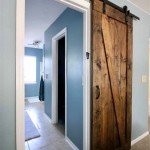Peel and Stick Bedroom Wallpaper: A Comprehensive Guide
Peel and stick wallpaper, also known as self-adhesive wallpaper, has emerged as a popular interior design solution for bedrooms. Its ease of installation and relatively low cost make it an attractive option for renters, homeowners, and those seeking a temporary aesthetic change. Unlike traditional wallpaper that requires paste and professional application, peel and stick wallpaper utilizes an adhesive backing that allows for simple installation and removal. This article provides a comprehensive overview of peel and stick bedroom wallpaper, covering its benefits, application methods, considerations for selection, and potential challenges.
Benefits of Using Peel and Stick Wallpaper in Bedrooms
The proliferation of peel and stick wallpaper is largely attributable to its inherent advantages over traditional wallpaper and paint. These benefits encompass ease of application, cost-effectiveness, design versatility, and suitability for rental properties.
One of the primary advantages is the simplified installation process. Traditional wallpaper application involves significant preparation, including sizing the walls, mixing wallpaper paste, and carefully aligning the paper to avoid bubbles and seams. Peel and stick wallpaper eliminates these steps. The user simply peels off the backing and applies the wallpaper to a clean, smooth surface. This process significantly reduces the time and effort required for wall decoration, making it a viable DIY project even for individuals with limited experience.
Cost-effectiveness is another significant benefit. Traditional wallpaper often necessitates professional installation, adding labor costs to the price of the wallpaper itself. Peel and stick wallpaper eliminates these labor expenses, allowing individuals to achieve a high-end look without a substantial investment. Furthermore, the relative ease of removal means that mistakes during application are less costly, as sections can be easily repositioned or replaced without significant damage.
Design versatility is a key driver of its popularity. Peel and stick wallpaper is available in a vast array of patterns, colors, and textures. From minimalist geometric designs to elaborate floral patterns and even faux textures like brick or wood, there are options to suit virtually any aesthetic preference. This allows homeowners and renters to easily personalize their bedroom spaces without committing to a permanent design. The ability to quickly and affordably change the wallpaper also facilitates experimentation with different styles and trends.
The temporary nature of most peel and stick wallpapers makes them ideal for rental properties. Landlords often restrict permanent alterations, such as painting or traditional wallpapering. Peel and stick wallpaper offers a solution that allows renters to personalize their space without violating the terms of their lease. When it's time to move out, the wallpaper can be removed without damaging the underlying wall, leaving the property in its original condition. However, testing a small, inconspicuous area before full application is always recommended to ensure no damage occurs during removal.
Application Methods and Best Practices for Peel and Stick Wallpaper
Successful application of peel and stick wallpaper relies on careful preparation and adherence to best practices. While the process is generally straightforward, taking the necessary steps ensures a clean, professional-looking result that maximizes the longevity of the wallpaper.
Surface preparation is crucial. The wall surface must be clean, dry, and smooth. Any existing wallpaper or loose paint should be removed. Walls should be washed with a mild detergent to remove dirt, grease, and grime. Any imperfections, such as holes or cracks, should be filled and sanded smooth. A primer can be applied to enhance adhesion, especially on porous or newly painted surfaces. Allowing the primer to dry completely before applying the wallpaper is essential.
Accurate measurement and cutting are necessary for a professional finish. Measure the height and width of the wall and cut the wallpaper slightly larger than the measured dimensions, allowing for trimming. Use a sharp utility knife or scissors to ensure clean, straight cuts. When matching patterns, carefully align the wallpaper strips before cutting to minimize waste and ensure continuity.
Proper application technique is important for a bubble-free finish. Starting at the top corner of the wall, peel back a small section of the backing paper and align the wallpaper with the edge of the wall. Press the wallpaper firmly against the wall, using a smoothing tool or plastic squeegee to remove air bubbles. Gradually peel away more of the backing paper, working downward and smoothing the wallpaper as you go. Overlap adjacent strips slightly to ensure a seamless transition, especially if the walls are not perfectly plumb.
Trimming excess wallpaper after application creates a clean, finished look. Use a sharp utility knife and a straight edge to trim the wallpaper along the ceiling, baseboards, and window frames. Replace the blade frequently to ensure clean cuts and prevent tearing. A flexible trim can also be used to conceal any slight imperfections along the edges.
Troubleshooting common issues during application is essential. Air bubbles can be removed by gently lifting the wallpaper and smoothing it back down. Wrinkles can be smoothed out by carefully stretching the wallpaper. If the wallpaper is not adhering properly, consider using a wallpaper seam roller to apply additional pressure. In some cases, a light application of wallpaper paste may be necessary to enhance adhesion, particularly in areas with high humidity.
Considerations When Selecting Peel and Stick Wallpaper for a Bedroom
Choosing the right peel and stick wallpaper involves considering several factors beyond simply aesthetic preference. Durability, material quality, pattern scale, and room suitability are all important considerations that contribute to the overall success of the project.
Durability and material quality affect the wallpaper's longevity and performance. Different types of peel and stick wallpaper are available, including vinyl, fabric, and paper-based options. Vinyl wallpaper is generally more durable and resistant to moisture, making it suitable for bathrooms and kitchens. Fabric wallpaper offers a more luxurious texture but may be less resistant to stains and moisture. Paper-based wallpaper is the most affordable option but is also the least durable. Consider the intended use and traffic levels in the bedroom when selecting the material.
Pattern scale and color impact the perceived size and atmosphere of the room. Large-scale patterns can make a small room feel even smaller, while small-scale patterns can create a sense of spaciousness. Light colors tend to brighten a room and make it feel larger, while dark colors can create a more intimate and cozy atmosphere. Consider the existing furniture and décor in the bedroom when selecting a pattern and color scheme to ensure a cohesive look.
Room suitability assessment helps ensure that the chosen wallpaper is compatible with the environment. High-humidity environments may require moisture-resistant wallpapers to prevent mold and mildew growth. Walls that are frequently exposed to sunlight may require UV-resistant wallpapers to prevent fading. Consider the specific conditions in the bedroom when selecting a wallpaper to ensure its longevity and performance.
Testing a sample piece before committing to a full application is recommended. Apply a small piece of the wallpaper to an inconspicuous area of the wall and leave it for several days to assess its adhesion and appearance in different lighting conditions. This also allows individuals to evaluate the ease of removal and ensure that the wallpaper does not damage the underlying wall surface.
Understanding the removal process is crucial, especially for renters. Some peel and stick wallpapers are easier to remove than others. Read the manufacturer's instructions carefully to determine the recommended removal method. Gently peel the wallpaper from the wall, starting at a corner and working slowly and evenly. Use a hairdryer to warm the adhesive if necessary, which can make removal easier and prevent damage to the wall. Cleaning any residual adhesive after removal is important using appropriate solvents.
In conclusion, peel and stick wallpaper offers a convenient and versatile solution for enhancing the aesthetic appeal of bedrooms. By understanding the benefits, application methods, and considerations for selection, individuals can effectively utilize this product to create personalized and visually appealing spaces. Careful planning and execution are essential for achieving a professional-looking result that maximizes the longevity and performance of peel and stick bedroom wallpaper.

The 3 Best Removable Wallpapers Of 2025 Reviews By Wirecutter

Bedroom Wallpaper Collection Peel And Stick Or Non Pasted

Bedroom Peel Stick Removable Wallpaper Paper

Peel And Stick Removable Wallpaper Faux Grass Cloth Wall Paper Linen Etsy

Peel Stick Wallpaper Picks For Kids Rooms

Powder Room Peel Stick Wallpaper Astek Home

Wallpaper For Bedroom Walls Wallflorashop Com

Bedroom Peel Stick Removable Wallpaper Paper

Bedroom Wallpaper For Walls

Peel And Stick Wallpaper Wall Paper Wallpapers Removable Etsy








